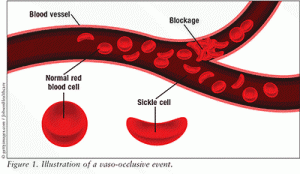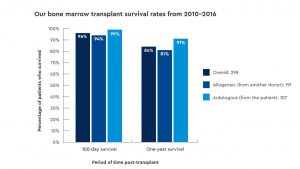|
Sickle Cell Anemia or Sickle cell Disease is a form of anemia. It is an inherited disease and both parents need to pass on the defected gene for the offspring to have SDC. Anemia is a condition in which there aren’t enough healthy red blood cells to carry adequate oxygen throughout your body and Sickle Cell Anemia is when the shape of the red blood cells changes from a discs shape to the shape of a crescent moon or a sickle. This disorder is caused because of a problem in the patient’s hemoglobin. Hemoglobin is an iron-rich protein that carries oxygen throughout the body, in patients with SCD the hemoglobin forms stiff rods inside the RBC causing the cell to become misshapen and contort into a sickle-like shape.
Patients with SCD may show symptoms like excessive fatigue, swollen limbs, and chest pain. A blood test can show if you have SCD or sickle cell trait. Doctors can also diagnose for SCD before a baby is born by testing a sample of amniotic fluid (the liquid in the sac surrounding the baby) or tissue taken from the placenta (the organ that brings oxygen and nutrients to the baby). The only cure for SCD is either bone marrow or stem cell transplantation. Because these transplants are risky and can have serious side effects, they are usually only used in children with severe SCD. For the transplant to work, the bone marrow must be a close match. Usually, the best donor is a brother or sister. Other than this, other things that may help decrease symptoms are blood transfusion and medication. However, these transplants are very expensive and their cost ranges from $ 10,331–44,701, this high cost makes it very unaffordable for unprivileged SCD patients. Apart from the high cost, the predicted rate of survival is only 62 percent and yet full life expectancy is not regained. Also, most of the people affected by SCD are African and Asians who live in remote locations where health care is close to impossible. This makes it unfair for all SCD patients who don’t have access to desired healthcare or can’t afford the treatment.
|

